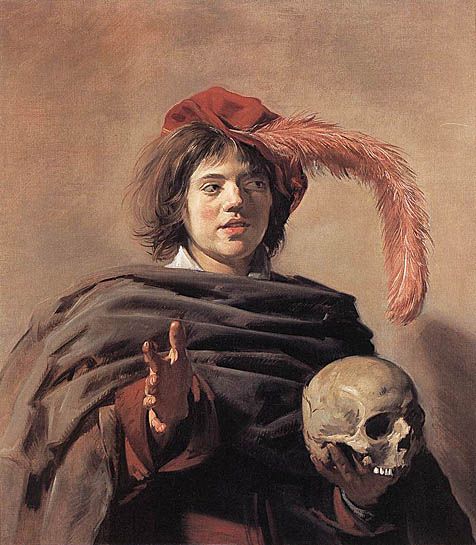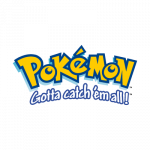
This Blog post will contain spoilers for Pokémon Sword and Shield:
Pokémon is one of a few series where I’d actually say it likely needs no introduction. It is quite literally the biggest media franchise of all time, dwarfing things like Harry Potter and Star Wars and being matched by nothing. Now this ranking does come to counts of gross income, so things like contemporary relevance and whatnot are arguable, but I digress. Pokémon is big and famous and there’s a very high chance you at least know who Pikachu is.
The thing is, it can go deeper. One of the core facts of Pokémon is the titular characters. There are eight hundred and ninety eight Pokémon in the current national pokedex and a few more coming with soon to be released titles like Pokémon Legends Arceus. These are all creatures of varying design, power, personality, and relevance. The one thing they all have in common, however, is you can catch them in a pokeball, befriend them and perform fun activities like eating food together and battling. The bond between trainer and Pokémon has been debated on the terms of animal cruelty over the years, but this is esseintally either done by people who’ve never actually played the games/experienced the media, or for a cheap joke. It’s a symbiotic relationship unless explicitly stated otherwise for plot reasons, but I digress…. again.
The real meat I want to get into is something I call “Battle Writing”. This is a game-specific subset of a larger science that I’d call something along the lines of “Pokémon Semiotics”. I’m not the first person to study this franchise with an eye on semiotics, but I’m taking it a step both closer and further away from academia by keeping my focus squarely on Pokémon.
Semiotics is the study of signs and how they exist and communicate meaning. Pokémon Semiotics would be the explicit study of how Pokémon, when attributed to different locations, actions, and people, are capable of swifty communicating aspects that otherwise may not be communicated. Notably this system in which Pokémon are signs works on multiple levels, but does require at least a base knowledge of the Pokémon in question. This is actually a great system for The Pokémon Company as it rewards investment in the series, which can only mean more money for the company.
You can use many possible examples here. One that works on multiple levels would be the legendary Pokémon: Suicune. This Pokémon was the official box legendary for Pokémon Crystal, the more complete version of Pokémon Gold and Silver, released in the Second Generation of games in 2000. Suicune is one of a trio of “Legendary Beasts” that sprung from the Pokémon lost in the burning of the Johto Region’s Brass Tower when the legendary Pokémon Ho-oh revived them some one hundred fifty years prior to the events of the game. Each of the beasts represents a certain part of the event, with Suicune representing the rain that put out the fire that resulted from the original lightning strike.
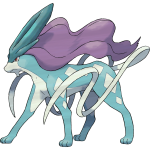
Suicune is a legendary Pokémon who is very tied up with the element of water. Mechanically, it is a pure water type itself and according to multiple pokedex entries it spends its second chance at life traveling the world at high speeds purifying water and generally being beautiful to witness.
In regards to Pokémon semiology if Suicune is seen in a specific location that can mean multiple things. Anyone who has a general knowledge enough to just recognize the Pokémon will know that a legendary Pokémon being somewhere either means the location is a place of importance or an incredibly chance encounter. Knowing more about Suicune reveals that if the Pokémon is showing up then there is likely a problem with a nearby water source that either needs to be fixed or already has been. In the same vein of thinking if a trainer shows up with a suicune on their team they can immediately be identified as someone impressive, as Suicune doesn’t get captured by just any trainer
This kind of thinking applies to literally every Pokémon. You can draw just as many immediate conclusions about a character by their preferred evolution of eevee they send out in battle, or know immediately what kind of forest you’ve entered once you’ve spotted a Phantump in the shadows. At the risk of sounding like a Pokémon villain here, I’ll posit that Pokémon are tools, specifically they are tools that can be used to communicate things quickly thanks to the cultural context the series has shaped for itself.
Now I’ll get down to “Battle Writing” more specifically. The important distinction that I make between battle writing and overall Pokémon semiotics is this: Battle Writing is specific to the turn based instances of combat within the core Pokémon game series. Battle writing does not include battles from the main anime series, spin off animated series, or things like Pokémon Mystery Dungeon. If I were to examine a battle from the anime, I would actually call what I’d be looking at “Battle Choreography,” which could perhaps be its own blog post at some point. Battle Choreography does include enemy trainer AI, Pokémon choice, item usage (if any), Pokémon move set, and battle style. For the purposes of this I’ll also include any bits of dialogue that show up on the battle screen that don’t get said anywhere else.
These are all integral to crafting a narrative through the battle system. While there isn’t always the most interesting story to be told by Joey and his top percentage Rattata, where would characters like Red or Cynthia be without their powerful teams and famous ace Pokémon?
A champion’s team is one of the most important teams the designers of the game need to craft. There is always a sort of implicit message in Pokémon that encourages trainers to use their favorites no matter how strong the actual Pokémon are. This is crystalized in the famous quote Karen of the Indigo League Elite Four delivers upon her defeat: “Strong Pokémon. Weak Pokémon. That is only the selfish perception of people. Truly skilled trainers should try to win with their favorites.” This is all well and good, and is actually somewhat backed up by mechanics in the games. The inclusion of the usually hidden Effort Values (EVs), stat increasing bonuses awarded to Pokémon for defeating certain other Pokémon and occasionally accomplishing certain tasks, mean that Pokémon met and travelled with on an adventure will be stronger than others. EVs are one of the ways Pokémon represents training, a trained Pokémon will always perform better than an untrained Pokémon of the same species because of them. Because EVs are mercurial in nature and dependent on the experiences of a Pokémon they can result in things like a usually slow to mid-speed Pokémon outspeeding what would normally be a faster opponent thanks to it’s experience fighting lots of fast Pokémon during the adventure.
However, not all Pokémon are created equal. EV’s and other things like natures, Individual Values (IVs), and abilities can only carry a Pokémon so far. There are still weak Pokémon and strong Pokémon when they are directly compared, and so when designing something like a champion battle the lineup has to be picked from the strong Pokémon. A trainer who is being presented as the best in their given region must have the in-battle firepower to back that up, because a battle is the only chance outside of writing and possible story events that the character receives to prove themselves to the player.
This design philosophy would ideally expand to any important characters that you, the player, would battle in the games. Equal in importance to the champion’s team would be your rival’s, as you actively get to witness them build and grow their team alongside you because of how often you battle them. Gym leaders/trial captains and island kahunas also take an important spot here. While you usually only fight them once you are staking significant achievement and story progress on the outcome of the battle, therefore a battle with a proper Pokémon selection that keeps the represented character in mind would be the best possible outcome.
These have all been examples of individual characters who are powerful, and their team should be a challenge to face by the time you encounter them. On the flip side, characters who are weak or have a different focus are also subject to battle writing. Characters like the sickly pseudo rival of Hoenn, Wally, or the flighty not so cut out for serious battling rival of Unova, Bianca, who are explicitly meant to be weak at specific points in their story arc have Pokémon that compliment this. Specialists like gym leaders and the Elite Four keep a common type amongst their team even if more variance would be to their benefit otherwise. All of this works to help characterize and reveal more about the characters you interact with through the core combat of the game.
Let’s get to an example of good battle writing in the most recent mainline series game to date: Pokémon Sword and Shield. This is the game that originally got me to think deeply when it came to battle writing in the first place for many different reasons. Sword and Shield are serviceable games enough, but in my opinion they are lacking in many aspects that a less rushed development cycle would have fixed. Still the games are complete and they have important battles in them worth examining.
I think the best of these is the battle atop Rose Tower with Chairman Rose’s secretary, Oleana. I chose this character because of the fantastic battle writing she shows off, and how much it reveals of her character that is otherwise not very explored. Oleana is shown to be a competent and serious woman, oftentimes in juxtaposition to Rose’s more laidback nature earlier in the game. She is Rose’s secretary as well as Vice president of his company, Macro Cosmos. Once the games plot pickles up towards the end and Macro Cosmos is revealed to be an evil organization helping Rose realize an ill thought out plan to produce infinite energy through abusing the legendary Pokémon, Eternatus, Oleana confronts the player character at the top of Rose tower with the intent to stop them or at least buy time. This moment is notable before the battle writing even comes into play as the normally reserved character bursts into an ugly fit of rage at the idea of the player character even attempting to disturb Rose.
The battle begins and Oleana sends out a Frostlass. This Pokémon is an evolution that requires the Snorunt it evolved from to be female and exposed to a dawn stone. It is also a Pokémon based heavily on the Japanese myth of the Yuki-onna, female ice spirits known for using their beauty to attract men to untimely deaths due to cold. This is an explicitly female Pokémon with a context of being beautiful, as the myth it is based on often bleeds into its pokedex entries. While this isn’t complete conclusive evidence, nor are most of Oleana’s other Pokémon when examined alone, together they create a team that has obviously been picked for feminine beauty and power. Other Pokémon on her team include Tsareena, a jungle queen-like Pokémon that literally evolves by learning how to step on people, Salazzle a feminine lizard that uses explicitly sexual pheromones to control lesser members of its species to form reverse harems, and Milotic a water snake with long Hatsune Miku-like twintails often described in universe as the most beautiful Pokémon of all.
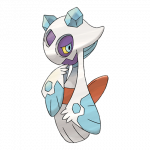
Three of these five Pokémon are gender locked into being female as male Frostlass, Tsareena, and Salazzle do not exist. Male Milotic do exist, but Oleana’s is female. You might also notice that I just said five, when I’ve only mentioned four Pokémon thus far. That is because the clincher of Oleana’s good battle writing is in her ace Pokémon.
An “ace Pokémon” is often how one can refer to a trainer’s strongest Pokémon. Mechanically speaking a trainer’s ace is usually two or more levels above the rest of their party, and their AI will either wait to send it into battle until they have no other option or send it in immediately if the Pokémon in front of them is obviously stronger than the rest of their team. This latter method of sending in the ace before other weaker members is an obvious way to combat a trainer who plans on sweeping a battle with a Pokémon that is of especially high level. In an even battle, you won’t be seeing a trainer’s ace until the battle is almost over, and I consider that to be the intended way to experience battles where the battle writing is important. A trainer’s ace is always integral to that character as it is supposed to be the Pokémon they have spent the most time with and are most comfortable using. Many trainers even wear clothing reminiscent of their ace Pokémon such as the Unova Gym leader, Drayden, styling his beard after the lower half of a dragon’s jaw when he’s a dragon type specialist who relies on Haxorus when the chips are down.
So among the beautiful and feminine Pokémon that Oleana wields in this battle the most jarring of them is her ace: Garbodor. This Pokémon is a living trash bag that has burst open at the button to reveal a rotund body made of trash with arms made of discarded piping. It is a design that flies in the face of every single one of Oleana’s other Pokémon as well as the presentation of her character, and continues to do so as she proceeds to Gigantamax it. Gigantamax is the gimmick of the Galar region and, while it is a poorly thought out and wildy unbalanced replacement for mega evolution and Z-moves, it is a mechanic that is always saved for the Pokémon a trainer relies on the most.
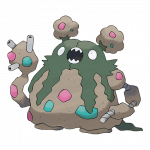
One of Oleana’s few in-battle lines of dialogue is said when she commands her Gigantamaxed Garbodor to use it’s signature Max Move: G-Max Malodor. This is a move that causes the now titanically sized living garbage pile to attack its opponent with a literal geyser of poisonous garbage water. Oleana calls for this move while saying “Here is a move I was good with even before I changed my image.” which is the key to her character and the battle writing.
As seen with the chairman’s sponsored league trainer Bede earlier in the game’s story, Rose is adept at collecting unfortunate individuals and instilling them with an incredible sense of loyalty to him. This is likely done through a mix of natural charisma and, more importantly, his massive wealth and status. The battle with Oleana reveals a woman who was recognized by an influential and powerful man for her talent, and quickly did all she could to change her image to suit him. She actively dresses up in order to appear mature and beautiful, she bottles up her emotions to adhere to a cool beauty” stereotype, and she even wears large earrings in a shape commonly associated with Rose’s company. Whether this was done purely of her own volition or due to some coercion is never clear, but either option is certainly possible.
Other media such as the Twilight Wings series all but confirms this by showing that she was once a somewhat messy researcher working in Macro Cosmos alongside her partner trubbish. She has done everything she can to become beautiful and powerful for Rose and his purposes, when at her core she is putting on an act that has made her quite ugly on the inside. All of this is well represented in her team and very little dialogue delivered in the battle.
Interestingly enough Oleana’s milotic is actually level fifty one when you fight it. This is notable because the rest of her team is level fifty, but her Garbodor is level 52. Normally the members of a trainer’s team are all at a specific level, and their ace is slightly stronger than said level. This is a rule that was somewhat broken more often in Sword and Shield, but it is still worth mentioning that the Pokémon closest in power to Oleana’s actual ace is a Pokémon that represents the in-universe pinnacle of beauty. It’s as if she is so very close to being what she is trying to be, but falls just short because at the end of it all she is still the same person she always was deep inside.
It’s not clear whether Oleana is redeemable by the end of this, but she is clearly an interesting and deeply flawed character as revealed by her battle writing. That and having the core of her being compared to a Garbodor isn’t quite the narrative death sentence you might expect. Some instances of Pokémon media actually prove that Trubbish and, by some extension, Garbodor cease to smell awful if they gain friends and become happy. So perhaps all Oleana really needs is a proper non-toxic friendship. Or at least anyone other than Chairman Rose.
